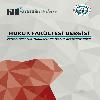Avrupa Birliği ile Türkiye Cumhuriyeti Arasındaki Tek Pazarda Malların Serbest Dolaşımı
Malların serbest dolaşımı, CE işareti, Cassis de Dijon, Avrupa Birliği- Türkiye Cumhuriyeti Tek Pazarı
European-Turkish Single Market for Goods
Cassis de Dijon, Free movement of goods, CE-Marking, European Union - Turkey Single market,
___
- ARNDT Hans-Wolfgang, Europarecht, 5. Aufl. 2001.
- BECK Hanno, Globalisierung & Aussenwirtschaft, 2016.
- BIEBER / EPINEY / HAAG, Die Europäische Union – Europarecht und Politik, 10. Aufl. 2013.
- BLECKMANN Albert, Europarecht, 6. Aufl. 1997.
- BRASCHE Ulrich, Europäische Integration – Wirtschaft, Erweiterung und regionale Effekte, 3. Aufl. 2013.
- BRIGOLA Alexander, Das System der EG-Grundfreiheiten: Vom Diskriminierungsverbot zum spezifischen Beschränkungsverbot, 2004.
- BUSCH / MATTHES, Der Binnenmarkt – Herzstück der europäischen Integration, in: Becker / Lippert, Handbuch Europäische Union, 2020.
- COOPER Robert, zitiert nach Geert Mak, Große Erwartungen – Auf den Spuren des europäischen Traums (1999-2019), 2020, Kapitel 2005.
- GEHLER Michael, Europa: Ideen, Institutionen, Vereinigung, 2. Aufl. 2010.
- GEISS / DOLL, GPSG, 2005.
- GRIMM Dieter, Auf der Suche nach Akzeptanz – Über Legitimationsdefizite und Legitimationsressourcen der Europäischen Union, in: Leviathan, 43. Heft 3/2015.
- GRIN Gilles, The Battle of the Single European Market – Achievements and economics 1945 – 2000, 2003.
- HAKENBERG Waltraud, Europarecht, 5. Aufl. 2010.
- HALTERN, in: von Bogdandy / Bast, Europäisches Verfassungsrecht Theoretische und dogmatische Grundzüge, 2. Aufl. 2009.
- HALTERN Ulrich, Europarecht – Dogmatik im Kontext, 2. Aufl. 2007.
- HALTERN Ulrich, Europarecht – Dogmatik im Kontext – Bd. I, 3. Aufl. 2017.
- HALTERN Ulrich, Finalität, in: von BOGDANDY / BAST, Europäisches Verfassungsrecht – Theoretische und dogmatische Grundzüge, 2. Aufl.
- HARATSCH / KOENIG / PECHSTEIN, Europarecht, 8. Aufl. 2012. HÜNING / SCHULZE, Sichere Maschinen in Europa – Teil 5: Die neue Maschinenrichtlinie.
- JANISZEWSKI, Gerätesicherheitsgesetz (GSG), 1998.
- JUDT Tony, Die Geschichte Europas seit dem Zweiten Weltkrieg, 2006.
- KERSHAW IAN, Achterbahn – Europa 1950 bis heute, 2020.
- KNIPPING Franz, Die „Méthode Monnet“ der europäischen Integration: Mythos und Realität, in: BAUMANN / BRAUKMANN / MATTHES, Innovation und Internationalisierung, 2010.
- KUNTZ/ ROST, EU-Konformität für elektrotechnische und ekektronische Produkte, 2019.
- LEIBLE / T. STREINZ, Das Recht der Europäischen Union, 75. Lieferung Januar 2022.
- LEIBLE / STREINZ, in: Grabitz / Hilf / Nettesheim, Das Recht der Europäischen Union, 60. Lieferung 2016.
- LOOSEN, in: Streinz/Meisterernst, BasisVO/LFGB; 2021.
- LOERZER / MÜLLER / SCHACHT, Produktkonformität und CE- Kennzeichnung.
- LUDWIGS, in: DAUSES / LUDWIGS, Handbuch des EU-Wirtschaftsrechts, 42. Lieferung August 2017.
- MAK Geert, Große Erwartungen – Auf den Spuren des europäischen Traums (1999-2019), 2020, Kapitel 2005.
- MAYER Franz C., Die Warenverkehrsfreiheit im Europarecht – eine Rekonstruktion, in: EuR 2003.
- MIDDELAAR Luuk van, Vom Kontinent zur Union – Gegenwart und Geschichte des vereinten Europa, 2017.
- NAGEL Bernhard, Wirtschaftsrecht der Europäischen Union, 3. Aufl. 2001.
- OPPERMANN Thomas, Europarecht, 3. Aufl. 2005.
- PFETSCH Frank R., Das neue Europa, 2007.
- RÄTHLING, in: KRENZLER/HERRMANN/NIESTEDT, EU- Außenwirtschafts- und Zollrecht, 18. Lieferung Oktober 2021.
- REICHSTEIN Ruth, Die 101 wichtigsten Fragen – Die Europäische Union, 2. Aufl. 2014.
- RIBHEGGE Hermann, Europäische Wirtschafts- und Sozialpolitik, 2. Aufl. 2011.
- RIFKIN Jeremy, Der Europäische Traum – Die Vision der leisen Supermacht, 2004.
- SCHMALENBACH, CALLIESS/RUFFERT, EUV/AEUV, 6. Aufl. 2022.
- SCHROEDER W., in: STREINZ, EUV/AEUV, 3. Aufl. 2018.
- SCHUMANN, Bauelemente des europäischen Produktsicherheitsrechts.
- SCHWEITZER / HUMMER, Europarecht, 3. Aufl. 1990.
- STREINZ Rudolf, Die Türkei als Partner – Formen der Zugehörigkeit zur EU, in: Bitburger Gespräche Jahrbuch 2005/II = 45. Bitburger Gespräche zum Thema: „Zur Frage einer Mitgliedschaft der Türkei in der Europäischen Union“.
- STREINZ Rudolf, Europarecht, 10. Aufl. 2016.
- STREINZ, in: STREINZ/KRAUS, Lebensmittelrechts-Handbuch, 42. Lieferung April 2021.
- WAGENER / EGER, Europäische Integration – Wirtschaft und Recht, Geschichte und Politik, 3. Aufl. 2014.
- WEATHERILL Stephen / Paul Beaumont, EU-Law – The Essential Guide to the Legal Workings of the European Union, 3. Aufl. 1999.
- WERNER Weidenfeld, Die Europäische Union, 3. Aufl. 2013.
- WILRICH, Die rechtliche Bedeutung technischer Normen als Sicherheitsmaßstab – mit 33 Gerichtsurteilen zu anerkannten Regeln und Stand der Technik, Produktsicherheitsrecht und Verkehrssicherungspflichten, 2017.
- WILRICH, Produktsicherheitsrecht und CE-Konformität – Hersteller-, Importeur- und Händler-Pflichten für Technik- und Verbraucherprodukte bei Risikobeurteilung, Konstruktion, Warnhinweisen und Vertrieb, 2022.
- WILRICH, Sicherheitstechnik und Maschinenunfälle vor Gericht – 40 Urteilsanalysen zu Produktsicherheit, Hersteller- und Konstruktionspflichten, Arbeitsschutz, Betreiber- und Organisationspflichten, 2022.
- WIMMER / MÜLLER, Wirtschaftsrecht: International – Europäisch – National, 2007.
- WOLF Janna, Europäische Integration – politikwissenschaftliche Schlüsseltheorien, in: LIEBERT / WOLFF, Interdisziplinäre Europastudien – Eine Einführung, 2015.
- VÖNEKY/BEYLAGE-HAARMANN, in: GRABITZ/HILF/NETTESHEIM, Das Recht der Europäischen Union, 75. Lieferung Januar 2022.
- ISSN: 2687-3923
- Yayın Aralığı: 2
- Başlangıç: 2019
- Yayıncı: Türk-Alman Üniversitesi
Miras Sözleşmesinde Tarafların Ehliyet Durumu ve Ehliyetsizliğe Bağlanan Hukuki Sonuçlar
Cihan AVCI BRAUN, Tuğçe TEKBEN
Avrupa Birliği ile Türkiye Cumhuriyeti Arasındaki Tek Pazarda Malların Serbest Dolaşımı
Kadının İnsan Hakları Açısından Erken Çocukluk Bakımı ve Eğitimi Hizmetlerine Erişim
Çevrim İçi Olarak Yapılan Tahkim Anlaşmalarının Hukuki Geçerliliği
Medenî Usûl Hukukunda Bilirkişi Raporu ile Uzman Görüşü Arasındaki Çelişkinin Giderilmesi
Güncel Gelişmeler Işığında Türk Hukukunda Yapay Zekâ Varlıkları ve Hukuki Kişilik
